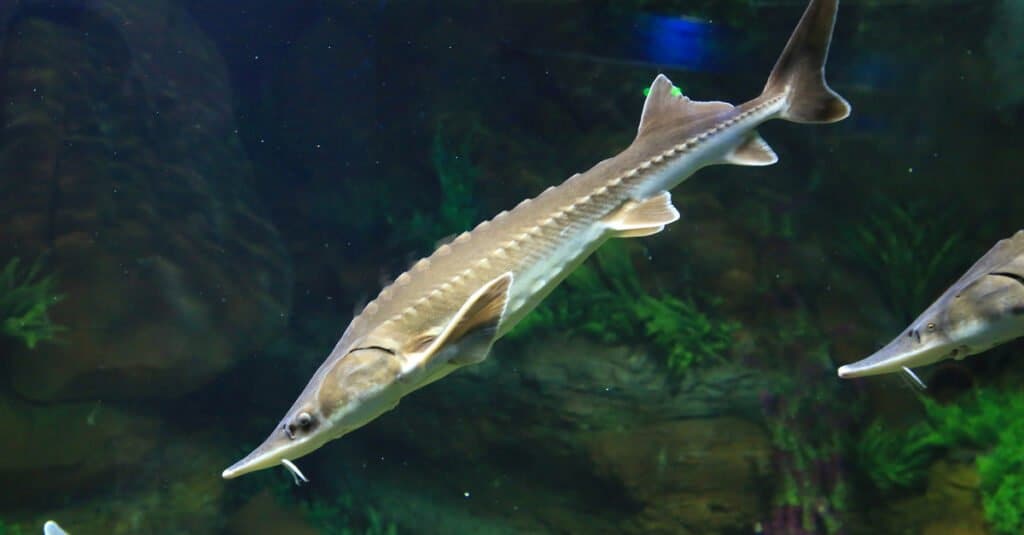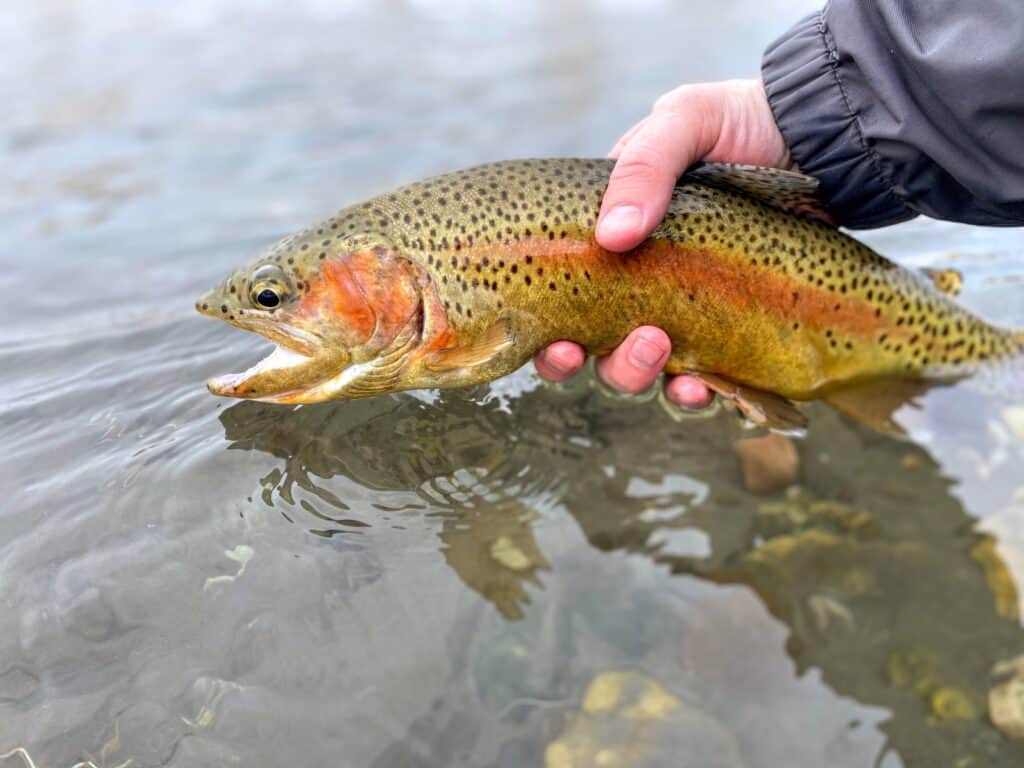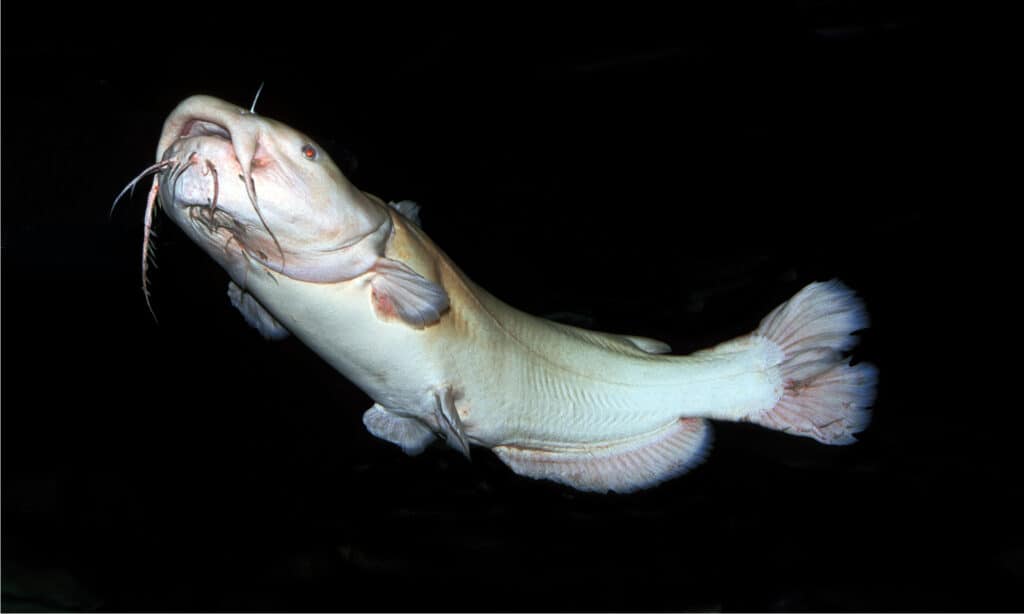The Snake River is considered to be a major river and is located in the Pacific Midwest. It is 1,078 miles (1,735 km) long and is the largest tributary of the Columbia River.

The Snake River is a great place to catch fish. The South Fork is commonly known as one of the best places for trout fishing in the United States. The Snake River is home to some exciting fish to catch, including the Yellow cutthroat trout. In the river, you can also find brown trout and rainbow trout. Harvesting rainbow trout here is encouraged, as they tend to compete with the Yellowstone cutthroat trout. There are numerous fish to catch here at the Snake River as well. Read on to learn more about some of the biggest fish you can find in Snake River.
Why Is Fishing in the Snake River Great?
As mentioned above, there are many opportunities to catch great fish in the Snake River—and some of them can be quite big as you’ll see below. There is a wide variety of fish to catch and the Snake River provides a fantastic environment to do so. Starting in the month of September through November makes some of the best times to go to Snake River and fish—especially for cutthroat trout. The average size of the fish begins to increase since some of the larger fish begin to move into the main stem and away from the smaller tribunes.
Sturgeon
Sturgeon fish are native to temperate waters in the Northern Hemisphere. There are 29 different species of fish in the family Acipenseridae. Most of these species live within the ocean and then travel through rivers, sometimes just once in a few years, in order to spawn during the spring and summer. Some other species of fish are continually in freshwaters as they are confined there.
Fossils of the sturgeon have shown that the species dates all the way back to the Middle Jurassic era, which was roughly 174 million years ago. They are thought to have evolved from a group of fish that came before them, called the Palaeonisciformes. These fish appeared during the end of the Silurian Period, which was roughly 419 million years ago.
Sturgeons are pretty easily distinguishable. They have bony plates that cover their heads, called scutes, and five rows of similar plates that run longitudinal down their body. They have no teeth and tend to consume invertebrates and small fishes. They are also some of the biggest fish you can find in the Snake River. Sturgeons of 7-10 feet (2-3 meters) are common for most species, but some have been known to grow up to 26.3 feet (8 meters) long. The current record for Sturgeon caught in the Snake River is 9 feet 11 inches.

Sturgeons have bony plates and no teeth.
©Geermy/Shutterstock.com
Yellowstone Cutthroat Trout
Yellowstone Cutthroat Trout is a type of trout that is native to the western United States. You can find them in various states including Montana, Wyoming, Utah, Idaho, and Nevada. You can easily identify a Yellowstone Cutthroat Troat by its signature red slash of color around its jawline area. The rest of a Yellowstone Cutthroat Trout’s body is golden brown in color and spotted with large dark spots that go all the way down to its tail. These fish are native to both the Yellowstone and Snake River watersheds.
These fish spawn in both rivers and streams from the end of April through the middle of July. Their diets consist mostly of aquatic insects—their most important food source. This includes stoneflies, mayflies, caddisflies, and other small aquatic insects. They will also consume land insects that happen to fall into the water. Besides aquatic bugs, the remaining portion of their diets consists of fish eggs, small fish, small rodents, algae, frogs, plankton, and some plants.
The average size of a Yellowstone Cutthroat Trout is 6-20 inches long. However, some of these trout can grow to huge sizes. In 2020, a man from Texas caught a Yellowstone Cutthroat Trout that was 30.5 inches long, breaking a record. The previous record had been set at 28.5 inches in 2016.

This Yellowstone Cutthroat Trout displays its signature slash of red around its jawline.
©Ryan Cuddy/Shutterstock.com
Flathead Catfish
The Flathead Catfish is a species of catfish that is distinguishable from other catfish by the shape of its head, which is flat. Most of its other features, however, are similar to those of most other catfish. It has smooth skin without any scales and barbels around its mouth that look like whiskers. These fish are generally pale yellow in color, fading to light brown on their backs and sides. The pattern is also very mottled in black or brown, sometimes both. On the underside, they are a pale yellow or cream color. Their lower jaw projects forward and their tails fins are notched slightly, unlike some of the other catfish species like channel or blue. Young Flathead catfish can be very dark in color.
Most catfish are considered scavengers, but the Flathead catfish actually consumes live fish. Young Flathead catfish will consume other things such as crayfish, worms, and insects, but once the fish reach a length of 10 inches or more, their diet will only be comprised of fish. Some of the fish they eat are largemouth bass, sunfish, shad, carp, suckers, and even other catfish (including other Flathead catfish)! Some of the biggest predators of Flathead catfish include water snakes, alligators, large fish, turtles, and humans.
Flathead catfish reach sexual maturity between 3 and 6 years and their spawning season is from the end of May through August—once the water temperature reaches 75-80 degrees Fahrenheit (23-26 celsius). The male Flathead catfish will find a hollow log, cave, or another hidden area for the site of the nest, and in some cases will even try to improve the nesting site by creating a shallow depression where the female Flathead catfish can lay the eggs in. The number of eggs she will lay depend on her size but on average, a female will lay up to 100,000 eggs at a time! Their average lifespan is about 12-14 years but there was a case where one Flathead catfish was reported to have lived for 24 years.
Adult fish are solitary and can be found in deep waters, hidden under trees, or in a cove. Flathead catfish can reach lengths of between 3 and 4 feet and can weigh in excess of 100 pounds! It isn’t unusual for anglers to catch fish weighing 50 pounds or more.

As the name suggests, Flathead Catfish have flat heads. They are 3-4 feet long and up to 100 pounds!
©slowmotiongli/Shutterstock.com
The photo featured at the top of this post is © Fabien Monteil/Shutterstock.com
Sources
- Wikipedia, Available here: https://en.wikipedia.org/wiki/Snake_River
- Idaho Fish & Game, Available here: https://idfg.idaho.gov/ifwis/fishingplanner/water/1119497437575
- Britannica, Available here: https://www.britannica.com/animal/sturgeon-fish
- Texas Parks & Wildlife, Available here: https://tpwd.texas.gov/huntwild/wild/species/catfish/
FAQs (Frequently Asked Questions)
What kind of fish are in the Snake River?
The Snake River has many different types of fish in it including crappie, channel catfish, flathead catfish, smallmouth bass, sturgeon, and many others.
What are the four dams on the Snake River called?
The four dams on the Snake River are called Little Goose, Lower Granite, Lower Monumental, and Ice Harbor.
Are there snakes in the Snake River?
No, there are no snakes in Snake River. The name either comes from its shape with many twists and turns, or from Native American sign language.
Thank you for reading! Have some feedback for us? Contact the AZ Animals editorial team.






